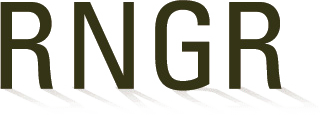Pinaceae (Pinus)
Pinus (ponderosa)
Pinaceae
Pine family
Pinus
ponderosa
Dougl.
Ponderosa pine
PINPON
Ponderosa forest, North Fork of Flathead River drainage, Glacier National Park, Flathead Co., MT.,1000m elevation.
P. ponderosa occurs in lower levels in the mountains and valleys, where rather dry, often in pure stands; from southern B.C. to Baja California, mostly east of the Cascades, occasionally west of the Cascades in southwestern Washington but more abundantly in Oregon and California, east to southeast B.C., Montana, the Dakotas and south through the Rocky Mountains to west Texas and northern Mexico. It is found from 100 to 2700 m elevation.
plants
seed
Container (plug)
172 ml conetainers
7 Months
Stock Type: Container seedling
Height: 16 cm
Caliper: n/a
Root System: firm plug in conetainer.
Cones are collected in October and November when cones turn reddish brown. Mature seeds are firm and brown in color.
Ponderosa pine cones must be dried immediately to prevent mold development. Cones are spread on a canvas tarp in a well ventilated greenhouse during the drying process.
A tumbler and dewinger are used to clean large seed quantities.
Seed longevity is up to 20 years at 3 to 5C in sealed containers.
Seed dormancy is classified as physiological dormancy.
Seeds/Kg: 28,000/kg
% Purity: 100%
% Germination: 90 to 100%
Seeds are placed in a 8:1 (v:v)water/bleach soak for 8 minutes to surface sterilize seeds. Seeds are then placed in a 48 hour running water soak prior to cold, moist stratification for 45 days. Seeds are stratified in fine mesh bags and buried in moist peat moss in ventilated containers under refrigeration at 3C. P. ponderosa seeds collected east of the Continental Divide are reported to germinate equally well without stratification.
Greenhouse and Outdoor Nursery growing facility.
Sowing Method: Direct Seeding. Seeds are covered with medium.
Growing medium used is 6:1:1 milled sphagnum peat, perlite, and vermiculite with Osmocote controlled release fertilizer (13N:13P2O5:13K2O; 8 to 9 month release rate at 21C) and Micromax fertilizer (12%S, 0.1%B, 0.5%Cu, 12%Fe, 2.5%Mn, 0.05%Mo, 1%Zn) at the rate of 1 gram of Osmocote and 0.20 gram of Micromax per 172 ml conetainer.
Greenhouse temperatures are maintained at 21 to 25C during the day and 16 to 18C at night. Seedlings are hand watered and remain in greenhouse until mid May. Seedlings are then moved to outdoor nursery for the remainder of the growing season.
Seedlings are irrigated with Rainbird automatic irrigation system in early morning until containers are thoroughly leached.
Average growing season of nursery is from late April after snowmelt until October 15th.
Medium is kept slightly moist during germination. Initial germination is uniform and complete in 15 days. Germinants shed the seed coats 7 to 10 days after emergence. Seedlings are thinned at the birdcage stage.
3 weeks
Plants were fertilized with 25-10-10 liquid NPK at 200 ppm during the growing season.
Plants were fully root tight 23 weeks after germination and averaged 16 cm in height.
20 weeks
Irrigation is gradually reduced in September and October. This practice induces the formation of the terminal bud.
Plants are leached with clear water once before winterization.
4 weeks
Total Time To Harvest: 6.5 months
Harvest Date: September and October
Storage Conditions: Overwinter in outdoor nursery under insulating foam cover and snow.
5 months
There are 3 botanical varieties: var. arizonica, var. ponderosa, and var. scopulorum.
Flora of the Pacific Northwest, Hitchcock and Cronquist, 7th edition, University of Washington Press, 1973.
Seeds: Ecology, Biogeography, and Evolution of Dormancy and Germination, Baskin and Baskin, Academic Press, 1998.
Seeds of Woody Plants in North America, Young and Young, Dioscorides Press, 1992.
Glacier National Park Native Plant Nursery Propagation Records, unpublished. ÿ
Luna, Tara; Evans, Jeff; Wick, Dale. 2008. Propagation protocol for production of Container (plug) Pinus ponderosa Dougl. plants 172 ml conetainers; USDI NPS - Glacier National Park West Glacier, Montana. In: Native Plant Network. URL: https://NativePlantNetwork.org (accessed 2025/10/28). US Department of Agriculture, Forest Service, National Center for Reforestation, Nurseries, and Genetic Resources.



